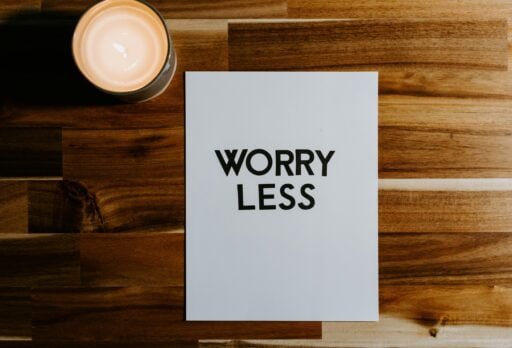When panic attacks strike, it can feel as though the world is closing in on you. Your heart races, your palms sweat, and a wave of crippling fear engulfs you. In moments like these, it’s important to remember that you are not alone and that there are strategies you can employ to cope with these overwhelming feelings. This article explores different techniques and approaches to help you regain control over panic attacks, allowing you to live a more fulfilling and empowered life.

Understanding panic attacks
Definition of panic attacks
Panic attacks are intense episodes of overwhelming fear and anxiety that often occur without any immediate threat or danger. During a panic attack, you may experience a rapid heart rate, shortness of breath, dizziness, chest pain, trembling, sweating, and a sense of impending doom. These attacks can be distressing and can interfere with your daily life, making it crucial to understand their causes and symptoms.
Causes of panic attacks
Panic attacks can be triggered by various factors, including genetic predisposition, imbalances in brain chemicals, major life stressors, traumatic experiences, and certain medical conditions. High levels of stress, generalized anxiety disorder, and phobias can also increase the likelihood of experiencing panic attacks. It is important to note that panic attacks are not a sign of weakness; they are a result of complex physiological and psychological factors.
Common symptoms of panic attacks
When a panic attack occurs, you may feel a sudden and intense surge of fear and anxiety. Common symptoms include increased heart rate, rapid breathing or hyperventilation, chest pain or tightness, sweating, trembling or shaking, feeling lightheaded or dizzy, nausea or stomach discomfort, chills or hot flashes, a sense of impending doom or loss of control. These symptoms typically peak within minutes and gradually subside. Understanding the signs and symptoms of panic attacks can help you identify and address them effectively.
Seeking professional help
Recognizing the need for professional assistance
If you are experiencing frequent or severe panic attacks that significantly impact your daily life, it may be necessary to seek professional help. Recognizing the need for assistance is the first step towards managing your panic attacks. A mental health professional can provide guidance, support, and appropriate treatment options to help you regain control over your life.
Finding a mental health professional
When seeking professional help for panic attacks, it is essential to find a mental health professional who specializes in anxiety disorders. Start by reaching out to your primary care physician for referrals or conducting research to identify reputable therapists or psychologists in your area. Consider factors such as their qualifications, experience, and approach to treatment. Building a trusting and supportive relationship with your mental health professional is crucial for effective management of panic attacks.
Types of therapy for panic attacks
Therapy is one of the most effective ways to address panic attacks. Two common forms of therapy for panic attacks are cognitive-behavioral therapy (CBT) and exposure therapy. CBT helps identify and challenge negative thought patterns and behaviors contributing to panic attacks. Exposure therapy involves gradually and safely exposing yourself to situations that trigger panic attacks, with the guidance of a therapist. These therapies can help you develop coping strategies, build resilience, and reduce the frequency and intensity of panic attacks.
Developing self-awareness
Identifying triggers and patterns
Developing self-awareness is a crucial aspect of managing panic attacks. Take the time to identify triggers and patterns that precede your panic attacks. These triggers can be specific situations, thoughts, physical sensations, or even certain behaviors. By recognizing these triggers, you can take proactive steps to avoid or manage them effectively, reducing the likelihood of panic attacks.
Understanding your physical and emotional responses
Panic attacks are often accompanied by a range of physical and emotional responses. Pay close attention to your body’s reaction during panic attacks, such as changes in heart rate, breathing, muscle tension, and sensations. Additionally, be mindful of your emotional reactions, such as feelings of fear, helplessness, or detachment. Understanding these responses can help you recognize the onset of a panic attack and implement appropriate coping strategies.
Keeping a panic attack journal
Keeping a panic attack journal can be a useful tool in understanding your panic attacks. Document each episode, noting the date, time, triggering events or thoughts, intensity of symptoms, and how you coped with the attack. This record can help you identify patterns, track progress, and identify effective coping strategies. Sharing this journal with your mental health professional can also provide valuable insights for tailored treatment.
Building a support network
Educating loved ones about panic attacks
Building a support network is crucial for managing panic attacks. Start by educating your loved ones about panic attacks, their symptoms, and how they can support you. Help them understand that panic attacks are not under your control and reassure them that you are seeking professional help. Encourage open and honest communication, so they can offer assistance and understanding when you need it most.
Seeking understanding from friends and family
Lean on your friends and family for emotional support during your journey of coping with panic attacks. Share your experiences, fears, and concerns with them, allowing them to gain a deeper understanding of what you are going through. Encourage them to learn more about panic attacks and empathize with your struggles. Having loved ones who validate and support your experiences can make a significant difference in your ability to manage panic attacks.
Joining support groups
Consider joining support groups or online communities comprised of individuals who have experienced or are experiencing panic attacks. These groups provide a safe space to share your experiences, learn from others, and seek advice or guidance. Connecting with individuals who can empathize with your struggles can provide a sense of belonging and support that is essential when coping with panic attacks.

Practicing relaxation techniques
Deep breathing exercises
Deep breathing exercises are a simple but effective technique for managing panic attacks. By focusing on slow, deep breaths, you can help regulate your heart rate and reduce feelings of anxiety. Practice diaphragmatic breathing by inhaling deeply, expanding your abdomen, and exhaling slowly. Incorporating deep breathing exercises into your daily routine can promote relaxation and help prevent panic attacks.
Progressive muscle relaxation
Progressive muscle relaxation is a technique that involves tensing and relaxing different muscle groups in your body. By systematically tensing and relaxing muscle groups, you can release physical tension and promote overall relaxation. Start by tensing and releasing your hands, then move on to your arms, shoulders, and other muscle groups. This practice can help you become more aware of your body, reduce muscle tension, and alleviate anxiety.
Guided imagery and visualization
Guided imagery and visualization involve using your imagination to create calming mental images or scenarios. Find a quiet and comfortable space, close your eyes, and envision a peaceful environment or situation that brings you comfort. Picture yourself in that serene setting, engaging your senses and focusing on the positive emotions it brings. Guided imagery can help shift your focus away from panic and anxiety, promoting relaxation and a sense of calm.
Utilizing cognitive-behavioral techniques
Identifying negative thought patterns
Negative thought patterns can contribute to the intensity and frequency of panic attacks. By becoming aware of these patterns, you can challenge and replace them with more realistic and positive thoughts. Pay attention to self-defeating thoughts, catastrophic thinking, and irrational beliefs that often accompany panic attacks. Challenge their validity and replace them with more balanced and empowering thoughts.
Challenging irrational beliefs
Many individuals with panic attacks hold irrational beliefs that exacerbate their symptoms. These beliefs may include catastrophizing, such as assuming the worst-case scenario, or overgeneralization, where one negative event leads to the expectation of more negative events. Challenge these beliefs by gathering evidence to the contrary and considering alternative explanations. Reframing your thinking can help reduce anxiety and prevent panic attacks.
Implementing positive affirmations
Positive affirmations are powerful tools for transforming negative self-talk into positive and empowering statements. Develop a list of affirmations that resonate with you and reflect your goals and aspirations. Repeat these affirmations regularly, especially during times of stress or anxiety. Affirmations such as “I am capable of managing my panic attacks” or “I am in control of my thoughts and emotions” can help shift your mindset and build confidence in your ability to cope.

Embracing lifestyle changes
Maintaining a balanced routine
Establishing a balanced routine is essential for managing panic attacks. Prioritize regular sleep patterns, healthy meals, and consistent exercise. Set aside time for relaxation, hobbies, and social activities that bring you joy and fulfillment. Creating structure and stability in your daily life can reduce stress and promote overall well-being, minimizing the occurrence of panic attacks.
Prioritizing self-care
Self-care encompasses activities and practices that promote physical, mental, and emotional well-being. Engage in activities that bring you joy, relaxation, and a sense of fulfillment. This could include practicing mindfulness, taking soothing baths, engaging in hobbies, spending time in nature, or indulging in creative outlets. Prioritizing self-care nurtures your overall well-being and resilience, helping you better manage panic attacks.
Incorporating regular exercise
Regular exercise has numerous benefits for mental health, including managing anxiety and reducing the likelihood of panic attacks. Engage in physical activities that you enjoy, such as walking, running, dancing, or yoga. Exercise releases endorphins, which boost mood and promote relaxation. Aim for at least 30 minutes of moderate-intensity exercise most days of the week to experience the maximum mental health benefits.
Managing stress and anxiety
Practicing stress management techniques
Managing stress is crucial for minimizing the occurrence of panic attacks. Incorporate stress management techniques into your daily routine, such as practicing mindfulness, engaging in relaxation exercises, or engaging in activities that bring you joy and relaxation. It is also important to set realistic goals, practice time management, and learn to delegate tasks when necessary. By reducing stress, you can create a conducive environment for managing and preventing panic attacks.
Using mindfulness and meditation
Mindfulness and meditation are powerful practices for managing anxiety and panic attacks. These techniques involve focusing your attention on the present moment, observing your thoughts, feelings, and physical sensations without judgment. Incorporate mindfulness and meditation into your daily routine, even if it is just a few minutes each day. These practices can help calm your mind, promote relaxation, and build resilience in the face of panic attacks.
Avoiding excessive caffeine and alcohol
Caffeine and alcohol can exacerbate feelings of anxiety and increase the likelihood of panic attacks. Both substances can disrupt sleep, contribute to feelings of restlessness or irritability, and trigger physical symptoms resembling panic attacks. Limit your consumption of caffeine and alcohol, opting for healthier alternatives such as herbal teas or decaffeinated beverages. By reducing your intake of these substances, you can create a more stable and calm internal environment.
Exploring medication options
Understanding medication for panic attacks
In some cases, medication may be necessary to manage and reduce the frequency of panic attacks. Antidepressants, such as selective serotonin reuptake inhibitors (SSRIs), are commonly prescribed to help regulate brain chemicals and alleviate anxiety. Benzodiazepines may be prescribed for short-term relief during severe panic attacks, but they carry the risk of dependency and should be used cautiously. It is important to consult with a psychiatrist to understand the potential benefits and risks of medication for panic attacks.
Consulting a psychiatrist
Consulting a psychiatrist is essential when considering medication options for panic attacks. A psychiatrist is a medical doctor who specializes in mental health and can properly evaluate your symptoms, provide an accurate diagnosis, and recommend appropriate medication if necessary. They will closely monitor your medication usage, adjust doses when needed, and help you understand any potential side effects or interactions with other medications.
Benefits and potential side effects
Medication can offer significant benefits for managing panic attacks, such as reducing the frequency and intensity of symptoms. However, it is crucial to be aware of potential side effects that may accompany medication usage. Common side effects may include drowsiness, nausea, weight changes, or sexual dysfunction. Work closely with your psychiatrist to find the right medication and dosage for you, weighing the potential benefits against any possible side effects.
Creating a personal coping strategy
Combining different techniques
Every individual’s journey with panic attacks is unique, and it is important to develop a personalized coping strategy that works best for you. Combine different techniques discussed previously, such as relaxation exercises, cognitive-behavioral techniques, lifestyle changes, and medication if necessary. Experiment with various approaches and tools to determine what provides you with the most relief and helps you manage panic attacks effectively.
Developing an emergency action plan
Creating an emergency action plan is crucial for times when a panic attack occurs and immediate support is needed. Share this plan with your loved ones, mental health professional, or support network, so they are aware of how to assist you during a panic attack. This plan can include steps to take, contact information for emergency services or mental health professionals, and strategies that have worked for you in the past. Having an action plan can provide a sense of security and control during moments of distress.
Adjusting the strategy over time
As you continue your journey of coping with panic attacks, remember that your coping strategy may need adjustment over time. Be mindful of any changes in symptoms, triggers, or overall well-being. Regularly assess the effectiveness of your coping techniques and make adjustments as necessary. Consulting with your mental health professional, support network, or therapist can provide valuable insights and guidance for refining your coping strategy.
By understanding panic attacks, seeking professional help, developing self-awareness, building a support network, practicing relaxation techniques, utilizing cognitive-behavioral techniques, embracing lifestyle changes, managing stress and anxiety, exploring medication options, and creating a personal coping strategy, you can effectively manage and overcome panic attacks. Remember that everyone’s journey is unique, and it may take time to find the strategies and approaches that work best for you. With patience, support, and determination, you can regain control over your life and thrive beyond panic attacks.